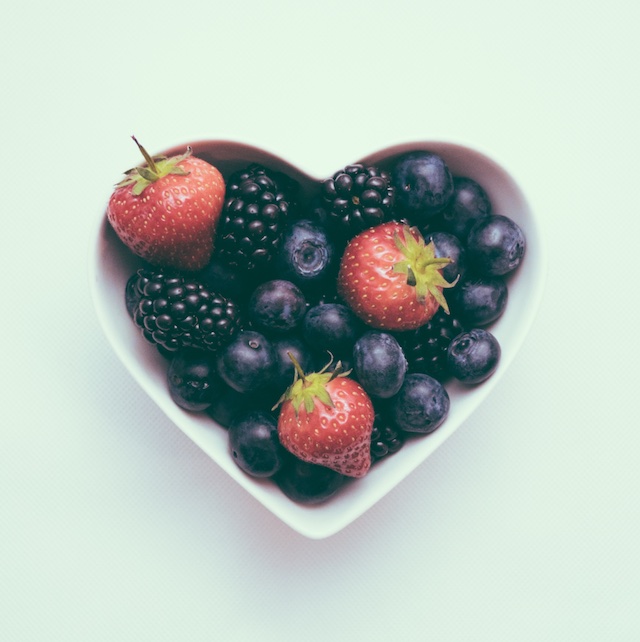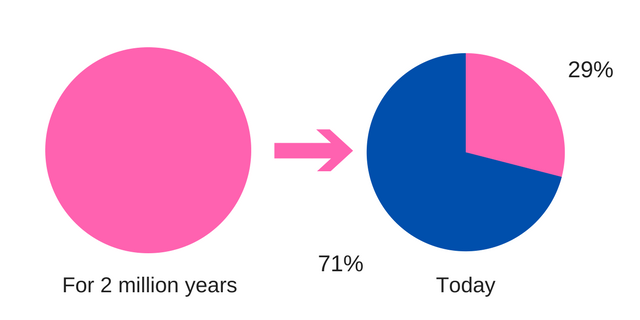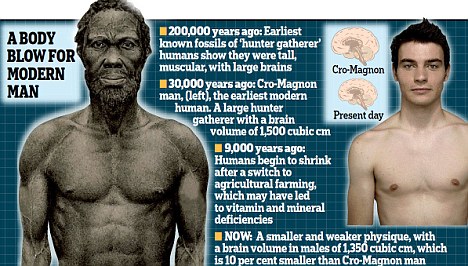A Scientific Definition of the Paleo Diet
Yet another definition of the paleo diet?

I know, you’ve already read plenty of definitions of the paleo diet. So have I. They are mostly all the same: DON’T EAT THESE FOODS. EAT THIS INSTEAD.
I’m not happy with that definition anymore. When people would ask me about the paleo diet, I would give the usual speech. But, I quickly grew tired of the eye rolling and the “caveman jokes”. So, over time, I’ve changed my message and I think I’ve found one that resonates more with people.
Hopefully you’ll also find it useful.
What is the paleo diet?
The paleo diet is based on a theory that every species on earth (including humans) has evolved eating a specific diet, and when they diverge from that time-tested diet, they often encounter health problems.
We see it in zoos. Gorillas in captivity that are fed a diet of fortified “gorilla biscuits” get heart disease. It’s their number one cause of death. When zoos switch their diet to something that is closer to the wild gorilla’s diet of foliage and fruit, they start losing excess weight and become healthier.
We see it with our livestock. Farmers know that feeding corn and soy to cows will fatten them up. Cows are ruminants: their natural diet is grazing grass all day. That’s why grass-fed cows are leaner and healthier than grain-fed ones.
We see it with our pets. Cheap dog food contains grain-based fillers to bring down costs. But dogs are carnivores and shouldn’t be eating grains. Many dog owners have discovered the health benefits of switching their pet’s food to grain-free, including a healthier coat, cleaner teeth, and the elimination of bad breath and gas.
So what is the natural, human diet?
The honest truth? We don’t know. We are an adaptive, opportunist species, and our diet has constantly changed as we migrated between different geographies and climates.
But, like good scientists, we can look at the evidence, make hypotheses, test them, and come up with a theory.
Here are the facts:
Throughout 99.5% of human evolution, we mostly ate animals, vegetables, fruit, and nuts.
Today, only 29% of our daily calories come from animals, vegetables, fruit, and nuts.
Let that sink in for a minute.

What used to make up 100% of our diet, now only makes up 29% of it! We’ve replaced 71% of our time-tested diet with grains, oils, sweeteners, dairy, and legumes.
This is a dramatic change in such a short time (only the last 0.5% of our evolution—since the start of the agricultural revolution).
So, if we are to form an hypothesis about what the natural human diet is, we should really be basing it on the longer period: the paleolithic period before the agricultural revolution.
And we have evidence to support that hypothesis.
Evidence to back it up
We have anthropological proof that, at the dawn of the agricultural revolution, when we diverged from our paleolithic hunter gatherer diet, our statures and brains shrunk, our bones and teeth became weaker, and our life expectancy dropped.
We also have evidence from studying modern day hunter gatherers and their agriculturalist neighbors. When they leave their old diet and lifestyle and move to the cities, they begin to develop what we call the “diseases of civilization”: tooth decay, heart disease, diabetes, cancer, etc. Illnesses that are virtually absent from their previous lifestyles or archaeological records.
So, using our human evolution as a template, the paleo diet eliminates the neolithic/post-agricultural foods from our diet, and replaces them with the modern day analogs of what we ate during paleolithic times.
In other words: eliminate the grains, legumes, vegetable oils, dairy, and sweeteners. Replace them with animals (meat, eggs, fish, seafood), vegetables, fruit, and nuts.
Why it makes sense
We have hypotheses and evidence of why these neolithic foods may not be optimal for our health.
Grains and legumes contain “anti-nutrients” like phytic acid and problematic proteins. These compounds are created by the plant as a survival mechanism to protect its seeds. Plants don’t have teeth or legs to fight or escape from predators, so they make sure that if you eat their seeds, you’ll regret your decision later.
Dairy proteins (casein and whey) are designed to stimulate growth. It makes sense to breastfeed human infants who need to triple their weight and double their size in the first year of life. But, are you trying to triple your weight?
Dairy also contains lactose (a sugar). After infants are weaned from breastmilk, most of them lose the ability to digest lactose. Undigested lactose ferments in our guts and may cause bloating and gastrointestinal upset.
Sugars and sweeteners: do I really need to convince you that sugar is unhealthy? It spikes our insulin, gets converted to fat, and stored in our fat cells.
And it makes foods superpalatable, so, easier to overconsume.
Sugar is not free, so if a food company adds it to their product, it’s because they can make more money from it. How many people you know eat plain unsweetened yogurt? Even those who do, often will add honey or another ingredient to make it more palatable. Nobody eats a whole tub of plain yogurt in one sitting. But sweetened strawberry yogurt? That stuff tastes like dessert! We have to exercise “portion control” with that stuff.
Oils (especially those derived from seeds like soybean, corn, sunflower, etc) are high in polyunsaturated fats—mostly omega-6 fats. Since most people eat few omega-3 fats, it takes very little oil to increase your omega-6 to omega-3 ratio (which is bad). The average American has a ratio between 10:1 and 20:1, which is pro inflammatory and increases risk of cardiovascular disease.
Our hunter-gatherer ancestors had a ratio around 1-to-1. Recent research suggest that any ratio below 2.3-to-1 is optimal to prevent inflammatory diseases.
Conclusion
So, you see, the paleo diet is not about reenacting our cave dwelling days.
It’s about thinking rationally about what the natural human diet might be, and trying it out ourselves to test our theories.
Millions have tried it, and millions have found new health, more energy, and do lose the extra weight effortlessly.
I think we might be onto something here.
How will the paleo diet affect YOUR health?
Only one way to find out. Try it for 30 days. Join PaleoTrack to make it easy (it’s free!)
